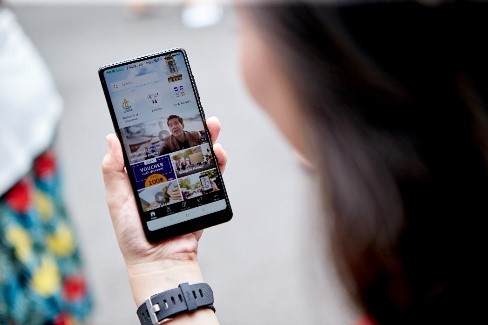
Today, the responsibilities of marketing go far beyond branding, with CEOs relying on CMOs to be the interconnecting layer that joins the dots between each part of the business – from sales to finance through to product and customer experience.
This shift is being driven by the emergence of new digital platforms and technologies with Asia Pacific being home to four billion internet users and five billion mobile users. A high proportion of these users are tech savvy and trend conscious. The increase in disposable income in the region is also having a positive impact on the market’s e-commerce sales, which is expected to hit a staggering US$3.5 trillion by 2021.
Empowering the CMO in the boardroom
CMOs are in the optimal position to spearhead organisations’ customer-centric strategies and initiatives and position themselves as the “voice of the consumer” in the boardroom.
With cloud-based CRM solutions and business analytics, CMOs will be able to access data from multiple customer touchpoints and gain insights about consumer needs and behaviours. These findings can be used to fuel innovation, personalise services, improve products, or even predict consumer demand.
 Brick-and-mortar businesses are utilising technologies to transform their business models and customer engagement approaches in Asia Pacific. For example, Digital Ventures – a FinTech subsidiary of Siam Commercial Bank in Thailand – combined the world-renowned charms of the famous Chatuchak market in Bangkok with the digital conveniences of online shopping through the Chatuchak Guide app.
Brick-and-mortar businesses are utilising technologies to transform their business models and customer engagement approaches in Asia Pacific. For example, Digital Ventures – a FinTech subsidiary of Siam Commercial Bank in Thailand – combined the world-renowned charms of the famous Chatuchak market in Bangkok with the digital conveniences of online shopping through the Chatuchak Guide app.
Visitors to the market can search the app’s cloud-driven database to create their Chatuchak wish list, leave reviews of their favourite merchants, and conveniently find their way inside the maze-like footpaths with the help of their phone’s navigation.
As consumers’ digital activities continue to increase in New Zealand and throughout Asia Pacific, it’s generating a tremendous and diverse amount of data. With the right analytics tools, this data is rich source of insights for CMOs, providing them with a more accurate profile of their customers, including brand resonance, demographics, preferences and purchasing patterns. This empowers CMOs, letting them be more effective when engaging with customers while also providing their organisations with valuable insights into customer trends and feedback, which can then be applied to improve products and services.
The power of the consumer voice
For consumers, the digital movement has enabled them to seize the opportunity when it comes to when, where, and how they want to engage with an organisation. Consumers are now in the driving seat. By voicing their support or criticism for specific brands or initiatives on digital channels, they are helping shape organisational services, actions, and values.
Consumers are also gaining influence and power over how others perceive brands and buy their products. According to a recent study, more than half of the consumers (55 percent) today have made a purchase from a social media channel. Consumers have also indicated that they are most likely to act on user-generated recommendations when shopping online.
Customer-Centricity as a Key Differentiator
As the voice of consumer becomes increasingly prominent and influential, more and more organisations today are shifting their business strategies from an inside-out to an outside-in approach, where customer value creation and customer experiences are seen as the keys to success.
As a result, organisations are seeking out new ways to engage customers and establish more meaningful relationships in place of historically transactional ones. For example, heavily regulated businesses like banks can find it hard to differentiate on products and services, so Westpac New Zealand, one of the country’s largest banks, set out to compete by building more valuable customer relationships. Using a cloud-based CRM platform, Westpac was able to centralise their data, analyse it and derive insights on the banking and financial services that each customer needs to succeed. This enabled the bank to personalise the services they should be delivering to their customers while fostering a more meaningful connection with them. In the Philippines, SMB Lay Bare saw an opportunity in the market when they realised other salons were only offering manual bookings, which can be a cumbersome experience for customers. Lay Bare digitally transformed this process, providing their customers with a quick, easy-to-use booking system. This made the booking process more seamless while reducing waiting time. The improvement in customer experience helped the SMB to engender stronger brand loyalty amongst its existing customers and provided a strong differentiator against its competitors.
In the Philippines, SMB Lay Bare saw an opportunity in the market when they realised other salons were only offering manual bookings, which can be a cumbersome experience for customers. Lay Bare digitally transformed this process, providing their customers with a quick, easy-to-use booking system. This made the booking process more seamless while reducing waiting time. The improvement in customer experience helped the SMB to engender stronger brand loyalty amongst its existing customers and provided a strong differentiator against its competitors.
By bringing their customer knowledge to the table, CMOs can help organisations to more accurately map out their entire customer journey. Collaborations with other functions will be crucial in ensuring that all processes and touchpoints are seamless for the customer. By providing quality data and insights that inform the organisations’ strategic decisions, CMOs can give their organisations the competitive advantage they need to survive and thrive in Asia Pacific’s hypercompetitive, constantly evolving digital landscape.
